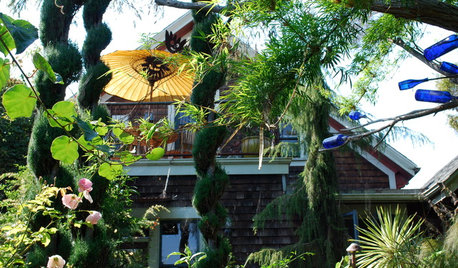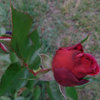I don't know anything about canker, and it's high time I began learning. Tell me what you know. Thanks for your help.
What I see on my roses are three types of stem deformation that cause severe weakening or death of the cane. One, fairly common, is a uniform swelling of the cane, above ground level, so that the cane diameter is roughly doubled; the length of the swelling may be a couple of inches. There's no noticeable change to the appearance of the bark of the cane, and the swelling is even. A few years ago this canker, or whatever it is, killed about 80% of thriving mature plants of 'Bon Silene' and 'Safrano', and did the same for my previously rather magnificent 'Marechal Niel'. It's only this year that these three roses have begun to recover significantly. I believe I recall that the damage occurred during a particularly wet winter.
The second canker, or whatever it is, is a girdling growth that looks like a small cauliflower and is found at ground level, where the cane parts from the central mass of the plant. I've found two of these recently, one on 'Ghislaine de Feligonde' and one on 'Cornelia'. I broke both compromised canes off and put them in the trash, but took no further action. Both these roses are Multiflora hybrids, while the other canker I've noticed on warm climate roses (but I haven't gotten around to taking a good look yet at the once bloomers!). This fall has also been unusually rainy, and mild.
The third kind of damaged canes are caused by the cane girdler Coraebus rubi. This pest has been present in the garden for a few years now. The larva travels under the bark of a cane making a spiral and generally creating a swollen area. Roses differ in their ability to deal with the damage. Teas generally keep the damaged canes going for a while, and I don't cut off them off until new canes have grown to replace them. In the case of my 'Canary Bird' (which may actually be R. hugonis) the canes break immediately; also 'Therese Bugnet', the only Rugosa in my garden, suffers badly from cane girdler, and I believe my two or three Spinosissimas lose their canes immediately as well. Coraebus rubi is particularly irritating because it attacks year old canes, the best ones on the plant.
After spending much of the fall digging, I'm finally getting out and doing cleanup. Much of this consists of shearing low the annual grass that has sprouted since the fall rains began and pulling the grass that's growing immediately around the base of the rose. I have an idea that the moisture encourages canker: is this correct? The grass has a lot of virtues as groundcover and mulch, and I could never eliminate it even if I wanted to, though I'm continuing to plant more manageable--I hope--groundcovers.
Your feedback is appreciated!
Melissa











strawchicago z5
mad_gallica (z5 Eastern NY)
Related Discussions
Question: Pruning Black Rot Cankers in Apple?
Q
What to do about Canker?
Q
Is this cytospora canker?
Q
Freeze damage? Canker? Prune it now?
Q
jerijen
michaelg
melissa_thefarmOriginal Author
jerijen
melissa_thefarmOriginal Author